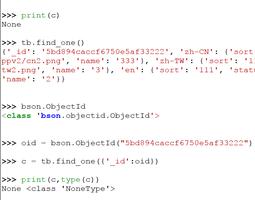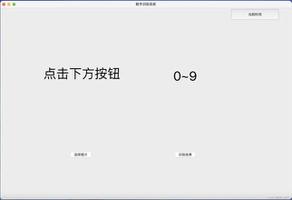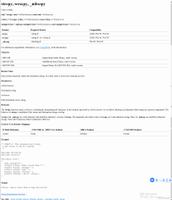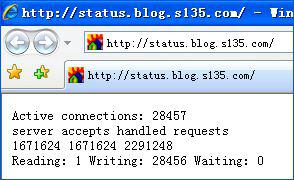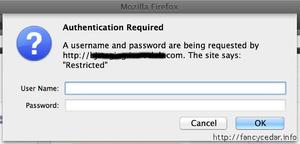在Python中字符串、列表、元组、字典之间的相互转换
一、字符串(str)
字符串转换为列表
使用list()方法
str_1 = "1235"
str_2 = 'zhangsan'
str_3 = '''lisi'''
tuple_1 = list(str_1)
tuple_2 = list(str_2)
tuple_3 = list(str_3)
print(type(tuple_1))
print(type(tuple_2))
print(type(tuple_3))
print(tuple_1)
print(tuple_2)
print(tuple_3)
运行结果:
使用Python中字符串的内置方法split()
Python split() 通过指定分隔符对字符串进行切片,如果参数 num 有指定值,则分隔 num+1 个子字符串
语法:str.split(str="", num=string.count(str)).
①str – 分隔符,默认为所有的空字符,包括空格、换行(\n)、制表符(\t)等。
②num – 分割次数。默认为 -1, 即分隔所有。
str_1 = "12 35 213"
str_2 = 'zhang san shi a '
str_3 = 'zhang san shi a '
str_4 = '''li si wang wu'''
list_1 = str_1.split(" ")
list_2 = str_2.split(" ",1)
list_3 = str_3.split(" ")
list_4 = str_4.split(" ",2)
print(type(list_1))
print(type(list_2))
print(type(list_3))
print(type(list_4))
print(list_1)
print(list_2)
print(list_3)
print(list_4)
运行结果:
字符串 转换为 元组
使用tuple()方法
str_1 = "1235"
str_2 = 'zhangsan'
str_3 = '''lisi'''
list_1 = tuple(str_1)
list_2 = tuple(str_2)
list_3 = tuple(str_3)
print(type(list_1))
print(type(list_2))
print(type(list_3))
print(list_1)
print(list_2)
print(list_3)
运行结果:
字符串 转换为 字典
利用eval()方法,可以将字典格式的字符串转换为字典
eval() 函数用来执行一个字符串表达式,并返回表达式的值。
语法:eval(expression[, globals[, locals]])
①expression – 表达式。
②globals – 变量作用域,全局命名空间,如果被提供,则必须是一个字典对象。③locals – 变量作用域,局部命名空间,如果被提供,可以是任何映射对象。
str_1 = "{'name':'zhangsan','age':14,'gender':'girl'}"
dict_1 = eval(str_1)
print(type(dict_1))
print(dict_1)
运行结果:
利用json.loads()方法,可以将字典格式的字符串转换为字典
json.loads 用于解码 JSON 数据。该函数返回 Python 字段的数据类型。
语法:json.loads(s[, encoding[, cls[, object_hook[, parse_float[, parse_int[, parse_constant[, object_pairs_hook[, **kw]]]]]]]])
import json
str_1 = '{"name":"xiaoming","age":18}'
dict_1 = json.loads(str_1)
print(type(dict_1))
print(dict_1)
运行结果:
二、列表(list)
列表转字符串
利用‘'.join()将列表中的内容拼接程一个字符串
Python join() 方法用于将序列中的元素(必须是str) 以指定的字符(''中指定的) 连接生成一个新的字符串。
list_1 = ['a', 'b', 'c']
str_1 = ''.join(list_1)
print(type(str_1))
print(str_1)
运行结果:
列表转字典
利用for in rang将两个列表转换为字典
list_1 = ['a', 'b', 'c']
list_2 = [1, 2, 3]
dict_1 = {}
for i in range(len(list_1)):
dict_1[list_1[i]] = list_2[i]
print(type(dict_1))
print(dict_1)
运行结果:
利用python内置方法dict()和zip()将两个列表转换为字典
dict() 函数用于创建一个字典。
语法:class dict(**kwarg)
class dict(mapping, **kwarg)
class dict(iterable, kwarg)
①kwargs – 关键字
②mapping – 元素的容器。
③iterable – 可迭代对象。
zip() 函数用于将可迭代的对象作为参数,将对象中对应的元素打包成一个个元组,然后返回由这些元组组成的列表。
语法:zip([iterable, …])
iterabl – 一个或多个迭代器;
list_1 = ['name', 'age']
list_2 = ['zhangsan',18]
dict_1 = dict(zip(list_1, list_2))
print(type(dict_1))
print(dict_1)
运行结果:
三、元组(tuple)
元组转换为字符串
- 使用方法__str__
- 返回一个对象的描述信息
tuple_1 = (1, 2, 3)
str_1 = tuple_1.__str__()
print(type(str_1))
print(str_1)
运行结果:
元组转换为列表使用方法list()
list() 方法用于将元组转换为列表。
语法:list( tup )
tup – 要转换为列表的元组。
tuple_1 = (1, 2, 3)
list_1 = list(tuple_1)
print(type(list_1))
print(list_1)
运行结果:
元组不能转换为字典
四、字典(dict)
字典转换为字符串
使用 json.dumps()方法
json.dumps 用于将 Python 对象编码成 JSON 字符串。
json.dumps(obj, skipkeys=False, ensure_ascii=True, check_circular=True, allow_nan=True, cls=None, indent=None, separators=None, encoding=“utf-8”, default=None, sort_keys=False, **kw)
字典转换为元组
- 使用方法 tuple()
- 字典在转换为元组之后,只会保存关键字
dict_1 = {"name":"zhangsan",
"age":18}
tuple_1 = tuple(dict_1)
print(type(tuple_1))
print(tuple_1)
运行结果:
字典转换为列表
- 使用方法 list()
- 字典在转换为列表之后,只会保存关键字
dict_1 = {"name":"zhangsan",
"age":18}
list_1 = list(dict_1)
print(type(list_1))
print(list_1)
运行结果:
以上就是本文的全部内容,希望对大家的学习有所帮助,也希望大家多多支持。
以上是 在Python中字符串、列表、元组、字典之间的相互转换 的全部内容, 来源链接: utcz.com/z/357506.html


